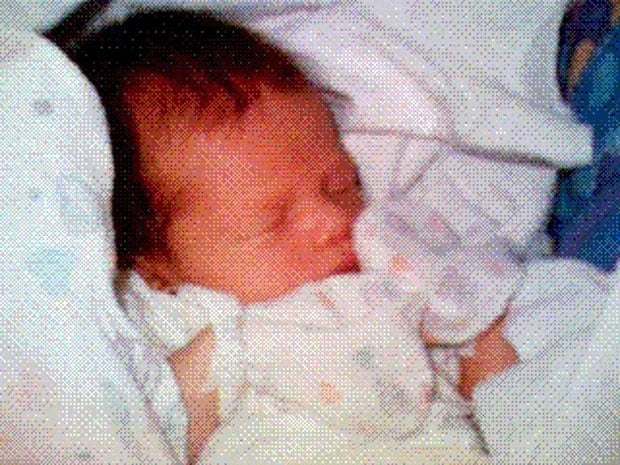How the First Camera Phone Photo Was Shot in 1997
![]()
Believe it or not, there was a time when photo sharing was a lot slower than in the age of digital photography, smartphone cameras, Instagram, and Snapchat. In the mid-1900s, instantaneously capturing and sharing photos online was unheard of. Then in 1997, the first camera phone was born.
The First ‘Camera Phone’ Photograph
The very first camera phone photo in history was captured and sent back on June 11th, 1997 by an entrepreneur named Philippe Kahn. On that date, Khan captured a photo of his newborn daughter with his digital camera in a maternity ward at Sutter Maternity Center in Santa Cruz, California.
Since “camera phones” didn’t exist at that time, Kahn actually hacked together a primitive one by combining his digital camera and a cell phone to send the photos across the Web in real-time.
The makeshift setup consisted of a Motorola StarTAC flip phone, a Casio QV digital camera, and a Toshiba 430CDT laptop computer, according to IEEE Spectrum. Whenever he captured a 320×240-pixel photo with the camera, the setup would automatically connect to his web server and upload the photo and then send email notifications to friends and family to provide a link to the new image.
“I had always wanted to have this all working in time to share my daughter’s birth photo,” Kahn tells IEEE Spectrum, “but I wasn’t sure I was going to make it.”
Luckily for the inventor, though, his wife would spend 18 hours in labor, giving him sufficient time to get the system up and working before his daughter was born. All the components he needed were either in his car or available at a local Radio Shack that he sent an assistant to.
The Internet-connected camera phone allowed Kahn to share that photo with over 2,000 people he was connected to around the world, achieving a technological first and a landmark moment that transformed photography as we know it. It was the first time a digital photo had been sent between two people on the Internet.

One of the Most Influential Photos of All Time
In 2016, Time Magazine named Kahn’s seminal camera phone photo one of the 100 most influential photos of all time. In 2017, the marketing studio Conscious Minds released a heartwarming 4-minute short film recreating the story of Kahn’s now-famous photo.
In the film, Kahn tells the story of how he hacked together a mess of wires, phones, laptops, and cameras to enable the instant delivery of a photo of his new baby daughter. Armed with a soldering iron inside the hospital ward, he used a wire ripped from his car telephone to make his dream a reality.
A Photo Sharing Pioneer
At the time of his famous first photo, Khan had been working for nearly a year on Picture Mail, a web server-based system for sharing photos online. Khan says his goal had been to create a 21st-century version of the Polaroid instant camera, except the instant photos would be shared on the Web instead of through physical prints.
Khan integrated a microcontroller, CMOS sensor, and cell phone into a single device capable of wirelessly sharing photos and other multimedia, and in 1998 he founded a company called Lightsurf that was based on the technology.
At first, the inventor repeatedly struck out when pitching the technology to the major camera companies dominating the market.
“Kodak, Polaroid, and [other camera companies] […] all had wireless camera projects, but none of them could imagine that the future was digital photography inside the phone, with Instant-Picture-Mail software and service infrastructure,” Khan tells IEEE Spectrum. “They collectively came to the conclusion that phones would be focused on voice—this was before texting—and that cameras would become wireless.”
Upon getting rejected by the major US-based camera corporations, Khan turned to Japan, where Sharp used LightSurf to create its popular “Sha-Mail” (or “Picture-Mail”) phone. LightSurf went on to become an influential technology in picture messaging that became the foundation of multimedia messaging solutions in North America as well.